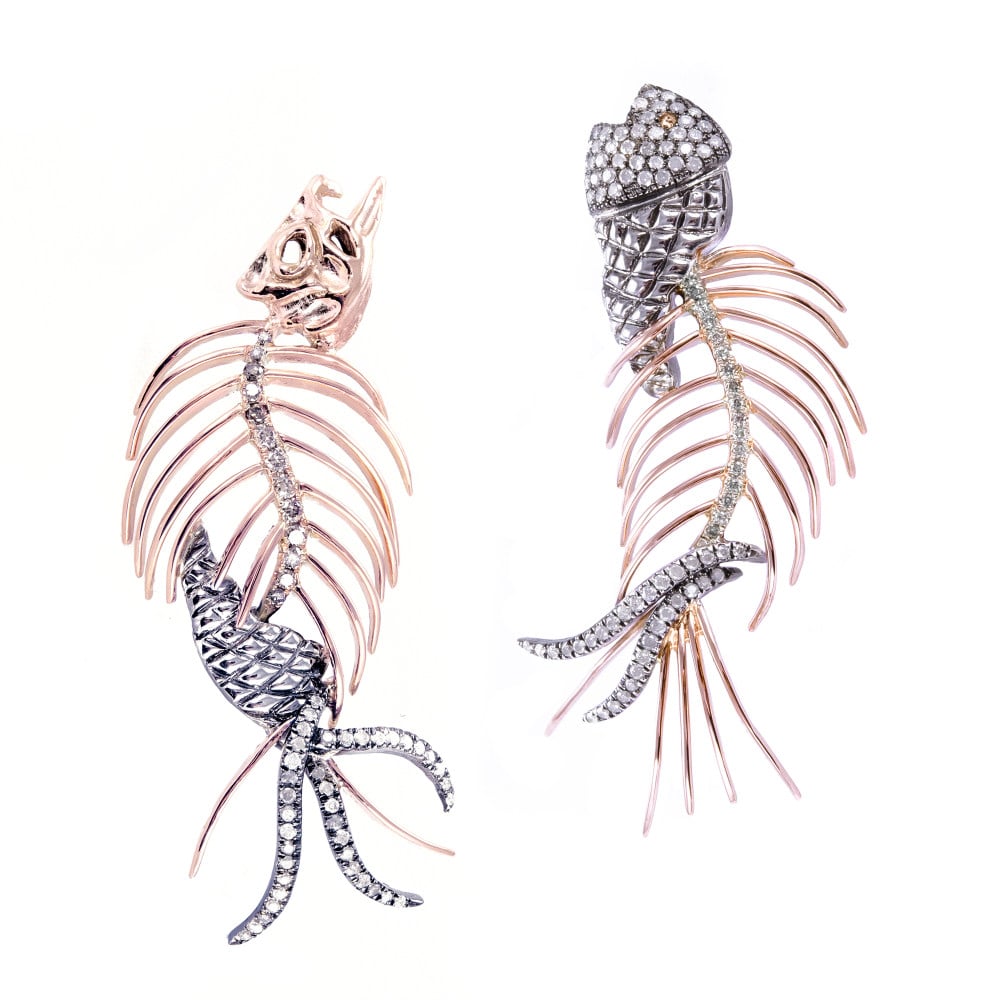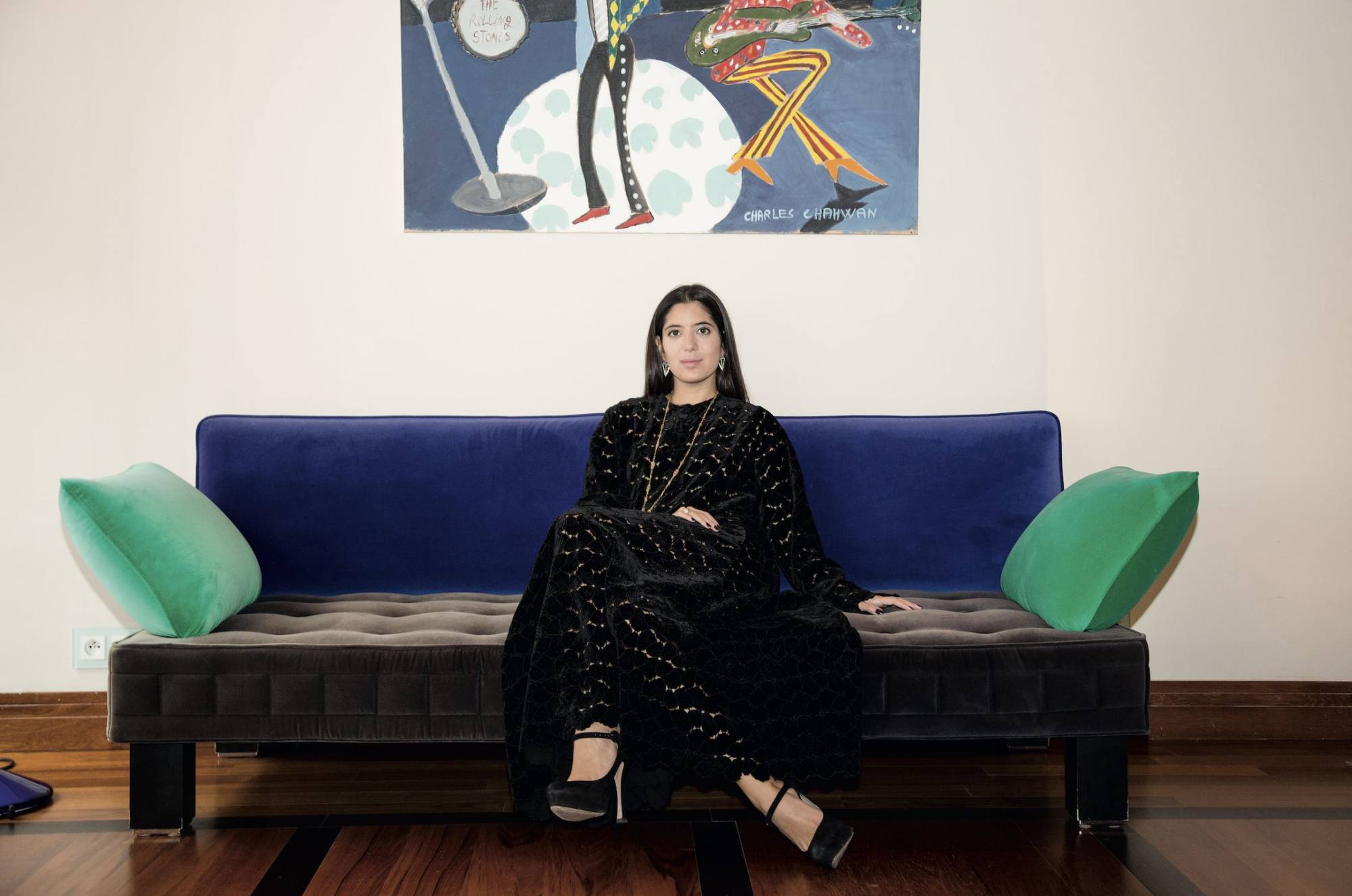
Lebanon’s turbulent history echoes through Beirut fashion and jewellery designers’ dramatic work
- Steeped in history, and with one of the oldest continuously inhabited towns on Earth, Lebanon’s energy and mix of cultures have long attracted visitors
- War, colonisation and 2020’s devastating port blast have wreaked havoc on the nation, but its young creative talent is among the most dynamic in the Middle East
Violet jacaranda blossoms obscure the bullet-hole-riddled walls of the inner city, independent shops selling silk evening dresses and costume jewellery jostle for space with mosques and musty tea shops, and army recruits in camouflage wander past bars spilling over with rowdy students.
The difficult-to-describe mix of messy glamour and uncertainty is also the reason the creative talent coming out of Lebanon is among the most dynamic in the region.
“We know so much about struggle – and yes, we have been impacted, but we have also reinvented ourselves through talent.”

Khouri is one of a new generation of increasingly respected Lebanese jewellers, most of them young women who have used the craftsmanship the country is known for to create sculptural, modern pieces that nod to the past.
She began her career in finance but – living in the heart of Beirut and surrounded by artisans and designers – soon realised that she wanted to make a creative life for herself. This led to internships with renowned Lebanese label Elie Saab and a period learning about fine jewellery under local artist Bernard Renno, before launching her eponymous collection in 2015.
“It is difficult not to be inspired by the art of jewellery making when you grow up in Lebanon,” says Khouri. “The jewellery industry has always given us a global competitive advantage, even though the history of it is a complex one.
“Jewellery-making skills were acquired from Armenians escaping genocide [from the Ottoman Empire, in 1915-16] and settling here, who brought their skills and passed them on to their children and to local artisans. As a result, jewellery has risen to prominence to become one of Lebanon’s most important industries.”
A small country, Lebanon punches above its weight creatively. Geographically, it isn’t much more than a thin strip of land bordered to the south by Israel and to the west by the Mediterranean, and carved up by two mountain ranges: Mount Lebanon overlooking Tripoli and the coast, and the Anti-Lebanon range further east, forming a natural border with Syria.

And yet the country is filled with history. In between the two mountain ranges is a wealth of riches, such as the lush Beqaa Valley vineyards and their grand chateaux (squint and you could be in Bordeaux), and well-preserved Roman buildings, including the Temple of Bacchus and the Temple of Jupiter, both in Baalbek, which archaeologists say contains more important ruins than any other city outside Italy.
The Greeks and Romans called it Heliopolis, or “City of the Sun”, while the nearby Qadisha Valley has sheltered Christian communities since the earliest days of the religion. Byblos, an hour away, is among the oldest continuously inhabited towns on Earth, and was originally home to the Phoenicians.
“We have been everything, and in modern times, a British and a French colony,” says Khouri. “The country has absorbed different cultural packages throughout history and that struggle with colonisation is present in us but has also helped us. Creativity is a way to vent and express and heal from our past.”

Edgy, complex, glamorous Beirut is at the heart of all this – and the energy and mix of cultures has attracted visitors to the “Paris of the Middle East” for the past 100 years.
But then, in August 2020, came the ammonium nitrate explosion, which, as well as killing more than 200 people, left 300,000 homeless and caused losses running to billions of dollars.
“It was a painful attack against our culture, and what we’ve been working towards,” says jewellery designer Noor Fares. “I cannot think of it without pain.”


The devastation wrought was far-reaching and has forced the city’s increasingly powerful fashion and jewellery industries into action. In the months after the explosion, fashion designer and activist Roni Helou started a crowdfunding campaign with New York-based Slow Factory Foundation and the money raised is being distributed to 34 independent Beirut labels to help cover the estimated US$850,000 in damages to their showrooms and boutiques.
One of those labels is Sarah’s Bag, which sells handcrafted embroidered clutch and tote bags in dazzling prints that have featured in the pages of Vogue and whose fans include Beyoncé and Amal Clooney. They are delightfully cheerful and bring to mind the primary colours of the capital: azure blue skies, yellow and red mosaic tiles and deep-green olive trees.
Another beneficiary of Helou’s efforts is Sandra Mansour, a designer known for her sculptural collections, which comprise ivory-white lace dresses and silky Pucci-like kaftans. Her global success has led to collaborations with H&M – despite her studio and showroom having been blown apart in the blast.

She was not alone in watching everything she had built crumble around her. “I will start healing the day my city starts healing,” said designer Rabih Kayrouz in an interview with the Financial Times in July.
The Lebanese fashion designer was in his atelier near the port when the explosion tore through the city. His business was devastated but following the blast, he helped raise nearly US$400,000 for emerging Lebanese designers.
“What matters the most to me today is to adapt to the economic crisis Lebanon is going through,” he told the newspaper. “One could think that fashion doesn’t make sense any more, but I’d rather look at it differently. Why couldn’t we keep on creating clothes while integrating a new system of execution that would fit those hard times and be respectful towards our clients?”
“I hate the way people look at us with pity,” said Saab in an interview with Vogue in July. “I hate how they look at us feeling sorry for Lebanon. Lebanon is stronger than this pity. The strength is in its people.”

Saab is now based between Paris and Beirut, and is donating a contribution from sales of his fragrance Le Parfum throughout 2021 to Unicef’s programme to help vulnerable girls in Lebanon.
Also donating part of their proceeds are Khouri and Fares – both designers worked with the jewellery retailer Auverture to raise more than US$60,000 for the Lebanese Red Cross and Lebanese Food Bank. Fares also co-founded Creatives For Lebanon, a non-profit organisation that partnered with Sotheby’s and Art for Beirut to hold a charity auction with funds going to the people of Beirut.
Born to Lebanese parents, Fares grew up in Paris before moving to Boston and then London. Now one of Lebanon’s top jewellery designers, her work is a mix of multiculturalism and mysticism, and she credits her heritage for her belief that jewellery carries special meaning.
“Every piece I create is steeped in symbolism,” she says. “There is Lebanese heritage in every single piece we design. The heritage is embedded in the DNA and culture of the company, so the impact is everywhere from conceptualisation to production. Lebanese design is full of contradictions but it is its diversity that makes it so special and beautiful. Traditional yet modern. Historic yet timeless.”

Each year, Fares leaves her home in London to spend months at a time designing her collections and wandering the streets of Beirut, researching. She walks past the jacaranda and bougainvillea covered buildings, with their French shutters and heavy Arabic doors, up the outdoor stairs covered in graffiti and into bars that blare music until dawn.
She describes the heat of the music halls and the musty, sweaty smell of Byblos and its Old Souk, and the treasure trove that is the jewellery warehouse L’Artisan du Liban. On the weekends, she follows the scent of salt and heads west for the sea, and the 1960s beach clubs that line the shore.
Khouri, who tells of similar haunts, says she has considered moving her atelier to Dubai – to a place without power cuts and instability. “But I always stop myself,” she says. “My designs belong in Lebanon. I need the hugely talented artisans there, but more than that I need the energy of the city.
“What I love about Lebanon isn’t tangible, but it is rich – and I will always feel it in my bones.”











